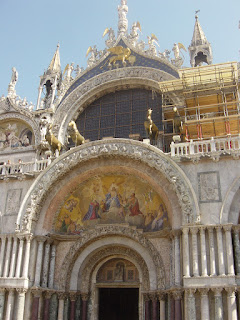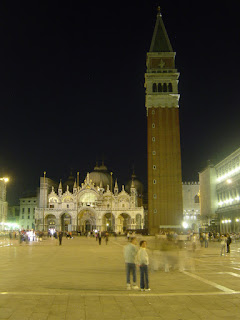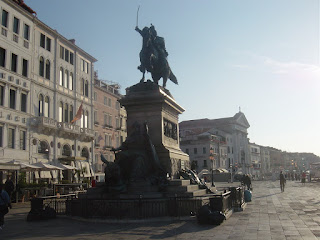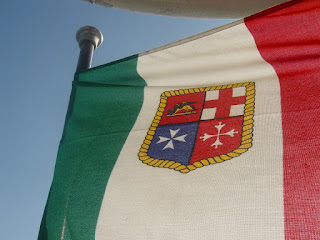Venezia (Venice), a city of romance with a rich musical legacy, remains one of the most visited places in the world, and perhaps because of that, one of the most expensive I’ve experienced. One night at Hotel Ai do Mori came to €130 (cash only). Three 24-hour vaporetto (water bus) passes totaled €45, dinner for three ran us €68, and overnight parking in Tronchetto (an island just outside Venezia’s main island) was €20, since vehicles aren’t permitted within the historic center.
As Venezia is steadily sinking into the lagoon, I braced myself for the foul odor of stagnant canals. Instead, I was surprised by fresh air and thriving activity - tourists, lovers, the occasional wedding, bustling gondolas, and glimpses of Venetian life. Mom and Dad seemed content, soaking it all in.
Venezia reminded me a lot of Dubrovnik, with its ancient walls, narrow, labyrinthine alleys, and historic architecture, though Dubrovnik is certainly kinder to the wallet.
Above left: Boarding a vaporetto, Venezia’s famous water bus, from Tronchetto
Above left: The equestrian statue of Vittorio Emanuele II, the first king of unified Italy, commemorates his role in the country's unification. In front, the seated figure, Venice Triumphant, symbolizes the city's liberation from Austrian rule, proudly reclaiming its place within Italy.
Above right: The Bridge of Sighs
Above right: St Mark's Campanile, the iconic bell tower of St Mark's Basilica, has been rebuilt after its sudden collapse in 1902.
Above right: The Doge's Palace (Palazzo Ducale)
Above: Venezia's San Marco Square with St Mark's Basilica in the background
Above right: The Basilica di Santa Maria della Salute, designed by Baldassare Longhena, was built in the 17th century as a votive offering following the plague of 1630. This Baroque masterpiece remains one of Venezia’s most iconic landmarks.
Above right: The plaque reads "CAMPO DELLA SALUTE," which translates to "Square of Health". This refers to the small square in front of the Basilica di Santa Maria della Salute.
Above right: The Rialto Bridge spans the Grand Canal and is one of the most iconic landmarks in the city. First built in wood in the 12th century, it was reconstructed in stone by Antonio da Ponte in the late 16th century.
Above left: Hotel Rialto
Above right: Murano, a small island in the Venetian Lagoon, became the heart of Venetian glassmaking after artisans were relocated there in 1291. This transformation turned Murano into a world-renowned hub for glass artistry. Murano glass soon became a symbol of Venetian craftsmanship, prized by European nobility for its remarkable clarity and intricate designs.
Above left: Church of San Giacomo di Rialto dates back to the 11th century. The most striking feature of its facade is the large 15th-century clock, decorated with Roman numerals and a radiant golden sun at its center.
Above right: Monument to Carlo Goldoni, a tribute to the famous Italian playwright and librettist.
Above: Church of San Salvador (Chiesa di San Salvador)
Above left: Church of San Giorgio Maggiore, located on San Giorgio Maggiore Island, directly across from Piazza San Marco, is one of Venezia's architectural masterpieces designed by the great Renaissance architect Andrea Palladio.
Above right: The Chiesa del Santissimo Redentore, commonly known as Il Redentore, was designed by Andrea Palladio and built between 1577 and 1592 as a votive church, following Venezia’s devastating plague of 1575-76. Located on the Canale della Giudecca, it remains one of Palladio’s architectural masterpieces.
Above left: Church of the Gesuati (Santa Maria del Rosario) ~ it was built in the 18th century by the Dominicans.
Above: A single shot of this bitter espresso at the Tronchetto water bus station jolted my sleepy eyes awake, readying me for another driving day to Bologna.
Next post: Bologna, Italy
Previous post: Ljubljana, Slovenia































































































































































































No comments:
Post a Comment